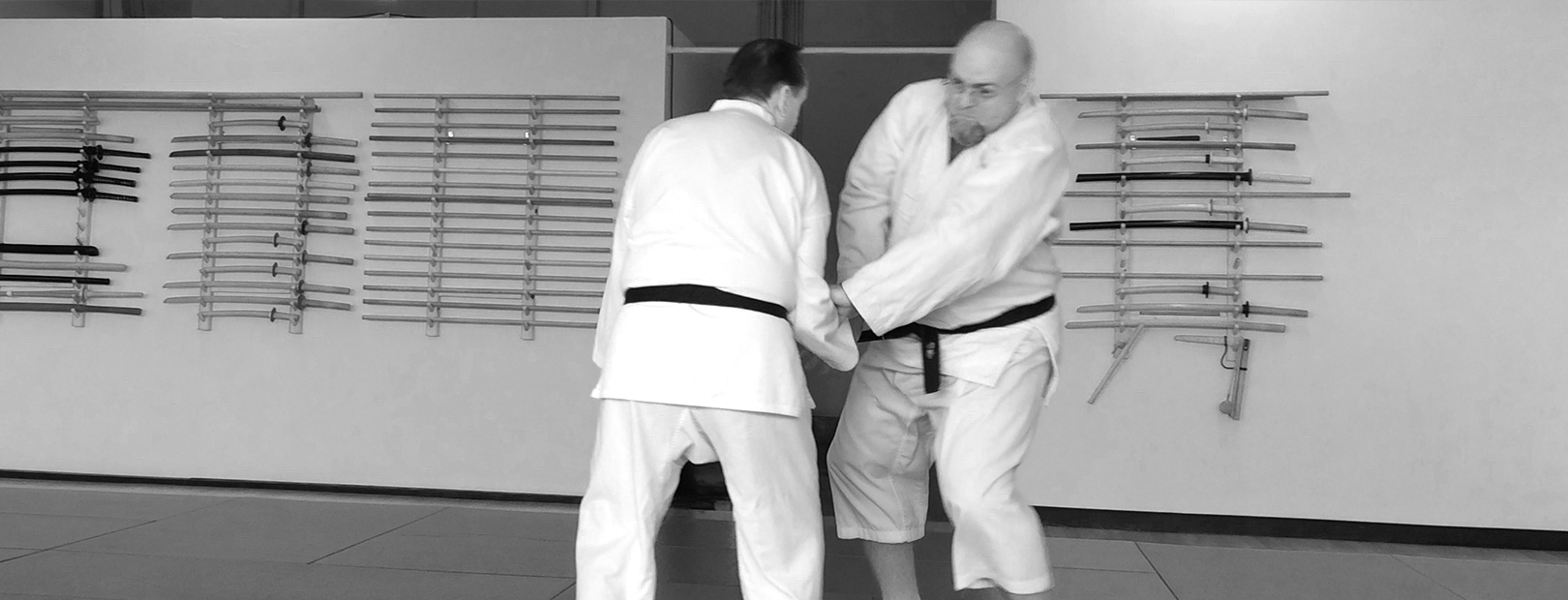Your First Visit
Entering a (new) dojo for the first time can be an intimidating experience, but it doesn’t need to be. Hopefully, this will give you have a bit of head start and will help you feel more comfortable when you come to visit us.
Upon entering the dojo, one of the first things you will need do is remove your shoes and place them in the shoe rack. While this may be a traditional Japanese custom, it also helps us to keep the dojo clean and free of clutter. One of our senior dojo members should have noticed you by now and may greet you or invite you into the training area. If not, please don’t hesitate to let us know you’re here.
During your visit, we will make ourselves available to answer any questions you might have. We may even have a few questions for you, such as what you hope to learn and what previous athletic or martial arts training experience you may have. (Don’t worry if you have no prior experience; you may actually find that to be advantageous.)
While observing class, you may see a wide range of training, running from the very basic up to highly advanced things that might not make sense or may even seem impossible. Please let us know if you have any questions. One of the senior dojo members, at their own discretion, may even invite you onto the mats or offer to allow you to experience a small taste of our training. Seeing isn’t always believing… but experiencing can be.
Bowing
Bowing is a traditional Japanese courtesy that we have continued to use in our training. In our dojo, a bow is not a sign of submission; it is an indication of mutual respect and trust. We bow when entering and leaving the training area, at the beginning and end of classes, and to our training partners before and after training with them. Think of this as both parties signing a contract stating that they agree to train well together and not injure one another.
If, because of religious reasons, you don’t wish to bow to the shrine before and after class, please talk to us about it beforehand. We’ve had a few students in the past who preferred not to, and this was never a problem for us. Please understand, though, that because bowing to training partners is a sign of mutual respect and trust, not subservience or worship, we prefer that this custom is maintained.
Safety and Hygiene
Even though you may be curious and want to get a closer look at what we’re doing, please don’t step onto the mats unless you are invited to do so. Please remain aware of your surroundings at all times.
Once you are invited to train, finger and toenails must be kept trimmed, as someone could get cut or scratched badly, potentially leading to infection. Also, please make sure you remove jewelry before training. This is for your safety as well as the safety of your training partners.
Please make sure that both you and your training uniform are clean and as scent-free as possible out of respect to others.
COVID-19 Notes
- We will not ask you to prove vaccination status, nor will we ask whether you have had COVID-19. However, if you are currently COVID positive or otherwise ill, we must ask that you remain at home in order to both heal and minimize the spread of disease. We know it’s hard to miss out on training, but this is for everyone’s health.
- You are welcome to wear a mask during training if you prefer. However, others may choose to not wear one. While we are respectful of each other’s choices, everyone has bodily autonomy and should choose what is best in their own health. If you have any sort of problem concerning this, please bring it to the attention of a senior dojo member.
- Before training, please make sure you scrub your hands well. This is a good practice anyway, but with COVID, it has become even more important. In our art, we often put our hands in each other’s faces when we attack. As such, we must all be mindful of each other’s health.

